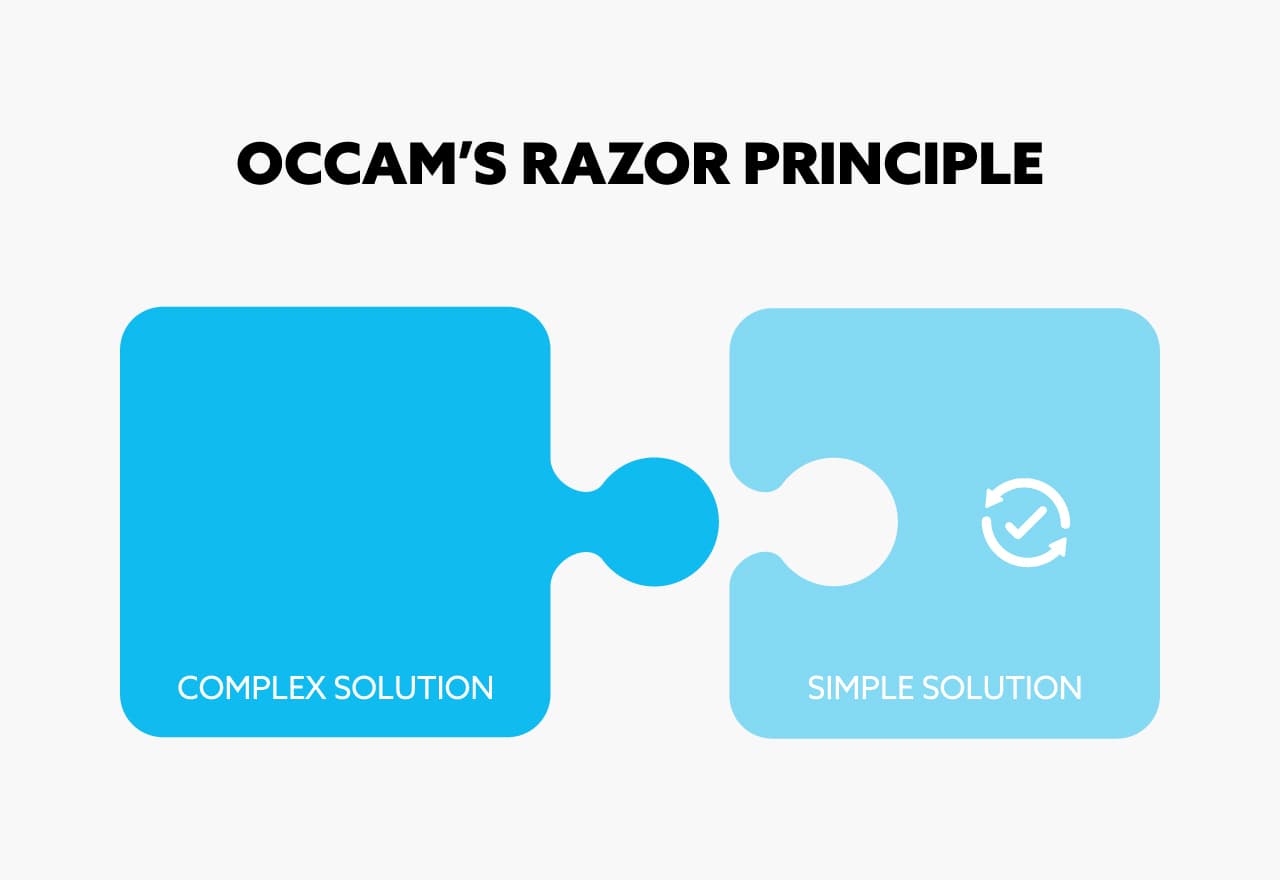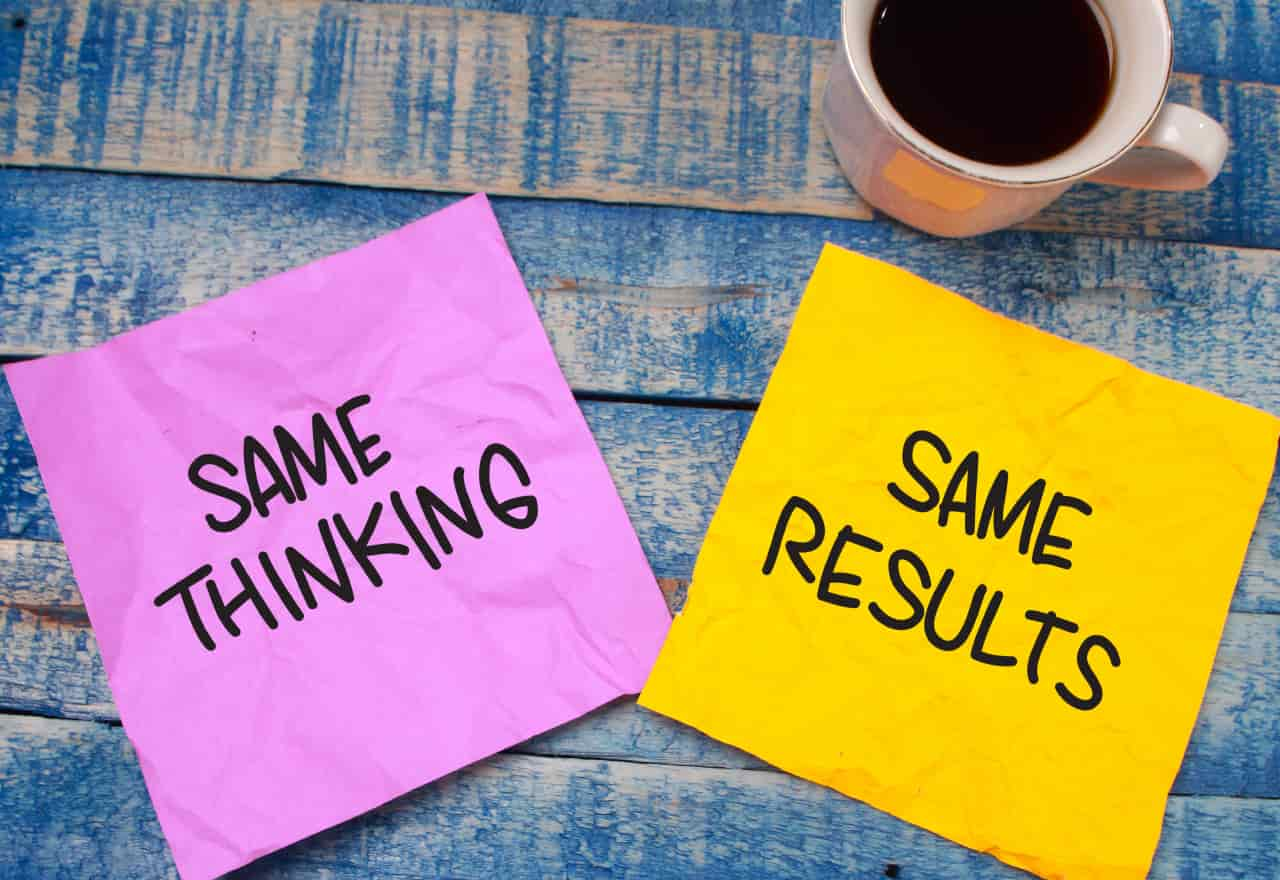What was the first decision you made this morning?
Mine was to press snooze.
When the alarm went off again, I took a gamble. I turned it off completely and lay my head back on the pillow. I know - reckless behavior.
Some might say I play fast and loose with my circadian rhythm.
But I say, in that moment I made an informed decision about how tired I still felt, how annoying the frequent buzzing was, and how much I needed to do before leaving for work.
I knew I wasn't going back to sleep.
We make around 35,000 decisions every day. (1) That's over 2000 decisions, every waking hour.
Some of these daily decisions are made on autopilot. My alarm buzzing wasn't something I thought about. It was driven by an instinct to silence the buzzy thing before it woke anyone else.
But the bigger, more considered decisions, what's behind those?
Let's take entrepreneurs for example:
Every day is full of crucial decisions, from conducting job interviews, to allocating resources to new ventures. Almost every decision requires the utmost thought throughput.
But even for those of us in smaller roles. In our professional lives, we prioritize projects, decide which strategy is best, balance budgets and agree objectives. Making sound decisions every day is key to doing a good job.
Whether we realize it or not, we all use mental models to make those decisions. These models are practical tools that guide our thinking, judgment, and problem-solving efforts. And we all have our preferred model.
The key is to not let that limit us.
Getting comfortable with using different approaches can help us make better decisions.
What Are Mental Models?

When it comes to decision making, Daniel Kahneman knows a thing or two.
A visionary in the psychology of judgment and decision making, he was awarded the Nobel Memorial Prize for his work in behavioral economics.
In his book, "Thinking, Fast and Slow" he introduces the concept that we have two systems of thought that underlie our decision making.
System 1 Thinking
This is our fast, automatic, and often subconscious mode of thinking. It's driven by instinct and emotion.
This is our gut reaction. It's intuitive.
Pros: When speed is of the essence, this is the most efficient mode for dealing with tasks and decisions.
Cons: This system tends to be biased. It relies on heuristics, the mental shortcuts we use to simplify decision making. These shortcuts rely on pattern recognition and approximations rather than analytical reasoning. Because of this, it can be biased. Which may lead to oversights or make us resistant to change.
System 2 Thinking
This is our slow, deliberate, and problem-solving mode of thinking. It requires effort and concentration. It kicks in when we're faced with complex problems or decisions that demand evaluation.
"Think before you speak."
Pros: This mode enables more accurate and reasoned decisions. We're able to override impulsive actions and thoughts, which gives us more time and control. This usually results in a more considered and balanced response.
Cons: This mode of thinking requires time and cognitive resources, which may be unsustainable for longer periods of time. It can also lead to overthinking or over analyzing.
Most mental models are rooted in system led thinking. Let's explore the five key models favored by successful decision-makers. We'll explore each model's strengths and learn when it is best to apply them.
Top 5 Mental Models
Confirmation Bias
What is it: Confirmation bias is a form of cognitive bias that leads us to interpret new information so that it becomes compatible with our existing theories, beliefs, and experiences. (2)

Caution: It can lead us to dismiss anything that doesn't fit in with that belief.
This mental model predominantly uses System 1 thinking. It's fast, automatic and relies on intuition, experience, and heuristics.
When is it useful: Confirmation bias can be useful in situations where confidence and quick decision-making are required. This mental model works when acting on evidence-based beliefs.
Occam's Razor
What is it: Occam's razor is a problem-solving principle that believes the simplest explanation is usually the right one. The principle is based on the idea that unnecessary complexities can be omitted (shaved) so we are able to focus on what is essential. (3)

Caution: When used in the wrong situation, it can lead to oversimplification or overlooking critical detail.
This mental model primarily utilizes System 2 thinking. It involves deliberate evaluation and analysis to choose the simplest and most plausible solution. System 1 thinking also plays a role. Particularly where there's a high level of expertise (doctors for example) that can offer intuitive insights. (4)
When is it useful: When you have two theories or solutions competing with each other. Choosing the simpler one is probably the best solution.
First Principles Thinking
What is it: This mental model involves deconstructing complex problems into their most basic elements. It's about questioning assumptions, conventions, and traditional ways of doing things.
The disruptor of problem-solving.
By stripping away conventional obstacles, it encourages innovative thinking.

Caution: Used in the wrong context, it can be time-intensive and might overlook the benefits of existing insights. Avoid reinventing the wheel.
First Principles is rooted in System 2 thinking. It requires a deliberate, analytical approach. It questions assumptions, breaks down complex problems, and builds up solutions from scratch.
When is it useful: This model is best used in situations where conventional wisdom doesn't lead to progress. When facing complex or ongoing problems. First Principles thinking challenges the status quo, encouraging innovative and creative solutions.
Inversion
What is it: This mental model involves looking at a problem backwards or starting from the desired end result.
If you know what you want, you can figure out how to get to it.
It encourages thinking about outcomes, so we can identify potential obstacles and pitfalls before they occur.

Caution: Over emphasizing what could go wrong can lead to fear-based decisions.
This technique is a strategic use of System 2 thinking, it requires deliberate thought to anticipate potential problems and plan to avoid them.
When is it useful: Strategic planning, risk management, problem-solving and setting personal or professional goals. This approach is helpful in project management, where foreseeing and mitigating risks can save time, resources, and stress.
Probabilistic Thinking
What is it: Using probabilities to guide decisions and solve problems by evaluating how likely different outcomes are.

Caution: Relying solely on probabilistic thinking can sometimes lead to analysis paralysis. Where the decision-making process comes to a standstill through overanalyzing uncertainties.
This model requires the use of System 2 thinking, as it involves complex analysis and the weighing up of various probabilities and their potential impacts.
When is it useful: Probabilistic thinking is particularly useful when navigating the unknown. Situations where uncertainty is a constant and outcomes can vary, such as financial or strategic planning. Probabilistic thinking can be useful for assigning timelines to projects and assessing risks.
Mental Models for Problem-Solving

Knowing our default and understanding how other mental models may be better suited, will help us make better decisions.
Remember:
Diversify Your Mental Models: Think of mental models as tools in your brain training toolbox. The more you have, the better you can tackle different challenges. Next time you're faced with a decision or problem, try using a new mental model. It's a great way to look at things and see them from a fresh perspective.
Learn from Everywhere: Keep your mind open and learn about things outside your usual interests. This offers a different perspective and can show new ways to think and solve problems you may not have considered before.
Strengthen Your System 2 Thinking: System 2 is the clear winner here. It's the critical thinker in all of us. Mental models can help us choose the right path, but if we want to keep our System 2 sharp, we should focus on our brain health.
How efficiently we can process information is directly linked to how quickly we can anticipate and solve problems. Make sure you're getting enough sleep, keeping stress in check, eating the foods good that are good for your brain, and staying active. And for extra help strengthening your System 2 thinking, a study showed that taking Mind Lab Pro® for 30 days resulted in a 47% average reduction in information processing time. (5)
Related Posts:
Mozart Effect - Cognitive Enhancer or Too Good to Be True?
Can You Solve Einstein's Riddle?
How To Cheat the Marshmallow Test



